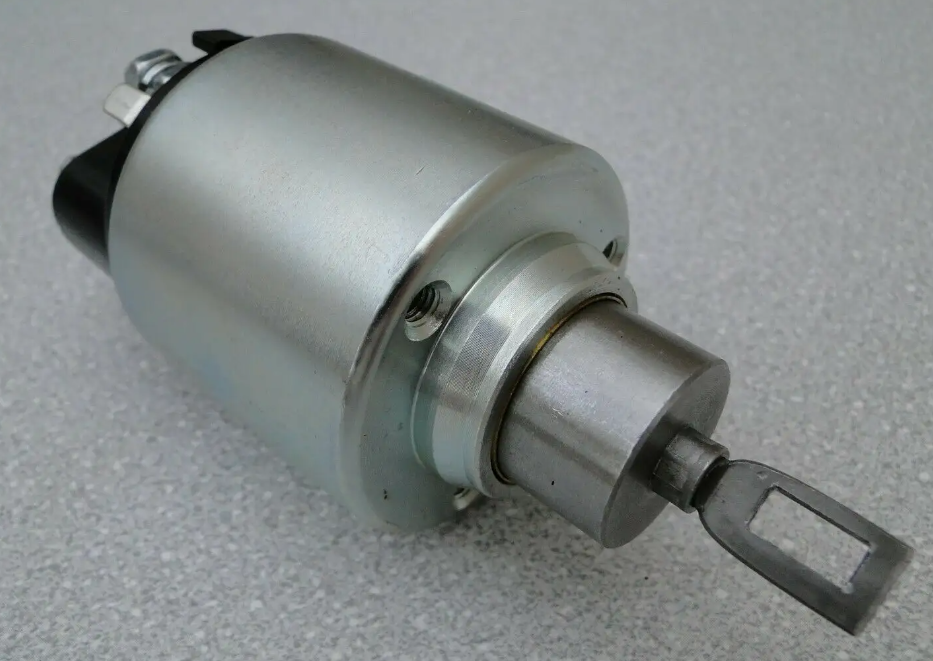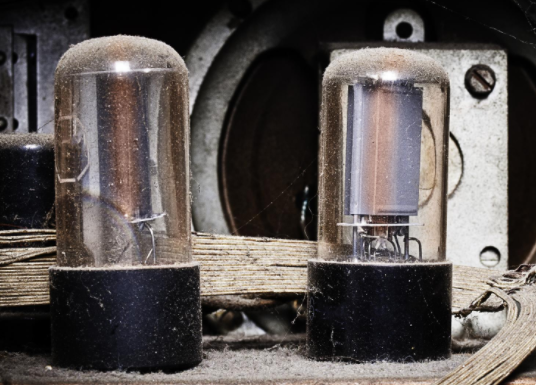Table of Contents
- Definition of solenoid switch.
- What is the function of a solenoid Switch?
- Characteristics of solenoid switch
- Principle of operation of solenoid switch
- Different types of solenoids switches
- What are the types of electromagnetic solenoid?
- Where is the solenoid Switch?
- Common solenoid valve problems and fixes
- How to wire a solenoid switch
- Solenoid switch applications
- Advantages of solenoid switch
- Role of solenoid switch
- Conclusion
Definition of solenoid switch
Solenoid switch is a commonly used control device for breaking or turning on current circuits. It works based on the electromagnetic principle, and the switching action is realized by activating and controlling the electromagnetic coil. Solenoid switch are commonly used in a variety of electrical equipment, automation systems and power distribution systems to play an important role in controlling circuits. The switch consists of an electromagnetic coil, contacts and a drive mechanism. When the electromagnetic coil is energized, the magnetic field generated causes the contacts to be attracted or separated, thus opening or closing the circuit.
Here is a useful video:
Solenoid Animations
What is the function of a solenoid Switch?
Circuit Control
Solenoid switches are the dynamic link between electrical power sources and a wide array of circuits. They are instrumental in managing home electrical systems, industrial automation, and power distribution networks. The activation of a solenoid coil precipitates a magnetic attraction that either opens or closes the circuit, thereby controlling the flow of electricity. This mechanism is not just a function; it's a safeguard ensuring that electrical equipment operates within safe parameters.
Overload Protection
As vigilant sentinels of electrical systems, solenoid switches provide critical overload protection. They stand ready to interrupt the circuit the moment excessive current threatens, mitigating the risk of equipment damage or catastrophic failure such as fires. This preemptive action is a testament to their role as the first line of defense in electrical safety.
Safe Power-Off
In the face of emergencies—be it equipment malfunction or unexpected accidents—solenoid switches are the decisive factor in executing a safe and immediate power-off. They act with the speed required to avert further damage and ensure the well-being of both personnel and equipment. This capability is indispensable in environments where a swift and controlled shutdown is paramount.
Automation Systems
Solenoid switches are the linchpins of modern automation systems, integrating seamlessly with sensors, actuators, and controllers to orchestrate complex automated processes. Their precision and reliability are the driving forces behind increased productivity and operational efficiency in industrial settings.
Automotive Applications
In the automotive realm, solenoid switches are the bridge that ignites the vehicle's starting sequence. When the ignition key is turned, these switches engage, creating a magnetic field that latches onto the starter's drive pinion, effectively linking the battery to the starter motor. This interaction is the catalyst for the engine's ignition, underscoring the solenoid switch's indispensable role in the vehicle's operation.
The electromagnetic switch is used as a switch to start the motor in addition to the starting system. In a transmission, the solenoid valve also controls gear switching, torque converter locking, and other functions related to the transmission. Some vehicle fuel injection systems also use solenoid switches to control the flow of fuel to the engine. In addition, the solenoid valve is also used to control other systems of the vehicle, such as door locks, air conditioning control, regulating oil pressure, etc. In short, the function of electromagnetic switches in the car is crucial, they ensure the start of the engine, the smooth speed of the transmission and the precise control of fuel injection.

Enhanced Functionality
- Remote Control Capability: Modern solenoid switches can be remotely controlled, offering convenience and safety in hard-to-reach or hazardous environments.
- High-Speed Response: Engineered for rapid response times, they ensure that electrical systems can be activated or deactivated within milliseconds.
- Durable Construction: Built to withstand continuous use and harsh conditions, solenoid switches are designed for longevity.
- Customizable Solutions: Available in various configurations to meet the specific needs of different applications.
Characteristics of solenoid switch
- Fast Response
Solenoid switches are typically capable of switching circuits within a few milliseconds and are characterized by fast response, making them suitable for use in applications requiring efficient switching.
- Long Life
Solenoid switches have a long life span of millions of on/off operations. In contrast, conventional mechanical switches do not last nearly as long as solenoid switch.
- High Reliability
Solenoid switches are highly reliable, capable of stable operation and working for long periods of time without failure. They are well-designed and simple, and can withstand high currents and voltages. In addition, the contacts are specially treated to resist arcing and abrasion, thus extending the service life of the switch. This high reliability makes solenoid switch an important part of a wide range of industrial and commercial equipment.
- Lightweight and portable
Compared to other types of switches, solenoid switches are usually small and lightweight, making them easy to install and carry. This lightweight and portability makes it advantageous in environments where space is limited and it is easy to repair and replace.
Principle of operation of solenoid switch
The working principle of a solenoid switch can be explained by a simple model. Imagine that the coil is like an electromagnet and the contacts are like pieces of iron. When energized, the magnetic field generated by the electromagnet attracts the iron filings and makes them fit together. And when the power is cut off, the magnetic field disappears and the iron piece pops open due to its own spring force. In short, the solenoid switch works by interacting with the magnetic attraction of the electromagnet and the spring force of the contacts to realize the closure and disconnection of the switch. When the electromagnet is energized, the contacts are closed; when the electromagnet is de-energized, the contacts are disconnected.

Different types of solenoids switches
Solenoid switches come in various types, each designed for specific applications and functions. For example, a special type of solenoid switch used in cars is commonly referred to as the starter solenoid, which is a crucial component in an automotive starter system. The function of this solenoid switch is to activate and control the electromagnetic coil to open or close the circuit when starting the car engine. Here's a detailed overview of the different types of solenoid switches:
- Pilot-Operated Solenoid Valve: Also known as an indirect-operated valve, this type uses the differential pressure to modulate the flow. Utilizes a pilot valve to control the flow of a pressurized medium, which in turn operates the main valve. They are more complex but offer precise control over the fluid flow, making them suitable for applications where fine-tuned regulation is required. Common in hydraulic and pneumatic systems where precise control over fluid flow is needed.
- Two-Way Solenoid Valves: These valves are designed for simplicity and reliability, with two ports to either allow or restrict fluid flow. They can be normally open (NO) or normally closed (NC), depending on the application's requirements.
- AC Laminated Solenoid:These switch designed for alternating current (AC) applications, with laminated cores to reduce eddy current losses.Used in applications requiring high inrush current and where the solenoid must handle AC power.
- Linear Solenoid:Provides a linear motion, translating the magnetic force into a straight-line action. These Solenoid used in applications requiring precise positioning or actuation, such as in robotics and automated machinery.
- Three-Way Solenoid Valve: With three ports and two distinct orifices, these valves are adept at mixing or diverting fluid streams. Their alternating opening mechanism makes them indispensable in applications involving the combination or separation of fluids.
- Four-Way Solenoid Valve: These valves are the epitome of control, with four ports that manage both pressure inlets and exhaust outlets. They are often found in complex systems where the precise manipulation of fluid flow is critical.
- Direct Acting Solenoid Valve: These are the workhorses of the industry, offering a straightforward and efficient means of controlling fluid flow. They operate by directly translating the linear motion of the solenoid into the movement of a valve plug or disc, providing a rapid and reliable response.
What are the types of electromagnetic solenoid?
Solenoid Switch magnetic devices primarily involve various switching mechanisms that use electromagnetic force to control the opening and closing of electrical circuits. Unlike Solenoid Switch, electromagnetic solenoid more broadly includes a variety of devices that use electromagnetic principles, not just switching mechanisms. Understanding the different devices of electromagnetic solenoid is beneficial for us to delve into the diversity and applications of electromagnetic equipment. Some common types of electromagnetic solenoids are as follows:
- Electromagnetic solenoid: It refers to devices that use the magnetic field generated by the current passing through a coil to achieve mechanical motion, switching operations, or other control functions. These devices play a significant role in various applications, such as industrial control, automotive engineering, mechanical transmission systems, and more. There are many types of electromagnetic solenoid switches. They all use the principle of electromagnetism to control or operate different mechanical or electrical equipment, including electromagnetic clutches, electromagnetic brakes, solenoid valves, and ignition switches.
- Electromagnetic clutch switch: This is a switch that controls the engagement of a clutch through the principle of electromagnetism. In mechanical transmission systems, when the electromagnetic clutch switch is activated, the clutch engages, allowing power to be transmitted. This type of switch is widely used in vehicles, mechanical equipment, and other fields.
- Electromagnetic brake switch: The electromagnetic brake switch is used to control the activation and deactivation of brakes. When the switch is activated, the brake generates stopping force to halt the movement of the equipment or vehicle. This type of switch is widely used in vehicles, elevators, mechanical equipment, and other situations where precise control of braking is required.
- Solenoid switch valve:They serve as the linchpin in controlling the flow of liquids and gases through a network of pipes and channels. These valves are not just mechanical devices; they are the embodiment of precision and reliability, ensuring that fluid flow is regulated with utmost accuracy. A solenoid valve operates on the principle of electromagnetism. The same magnetic interaction, but adapted to control fluid flow through mechanisms like a plunger or diaphragm.Imagine that the coil is like an electromagnet and the contacts are like pieces of iron. When energized, the magnetic field generated by the electromagnet attracts the iron filings and makes them fit together. And when the power is cut off, the magnetic field disappears and the iron piece pops open due to its own spring force. The elegance of this principle lies in its reliability and the rapid response time it offers, making solenoid valves ideal for applications requiring precise fluid control.
- Ignition switch: In devices with internal combustion, the ignition switch is used to control the ignition process. For example, in a car engine, the ignition switch is responsible for controlling the operation of the ignition coil, thereby igniting the air-fuel mixture.
Where is the solenoid Switch?
The location of the solenoid switch can vary depending on the specific system or device in which it is used. Solenoid switches are often located near the components they control to minimize the length of wiring and ensure efficient operation. They can be mounted on brackets, housings, or directly on the components they actuate.
Automotive Applications:
Transmission System: In vehicles equipped with automatic transmissions, solenoid switches are strategically placed within the transmission housing. They play a pivotal role in controlling gear shifting, torque converter lockup, and other transmission-related functions. These solenoids ensure smooth and efficient gear transitions by modulating hydraulic pressure within the transmission.
Starter System: The solenoid switch in a vehicle's starter system is usually mounted directly on the starter motor. It serves as the critical link between the battery power and the starter motor, engaging the starter pinion with the engine's flywheel to initiate the vehicle's startup sequence. Once the engine starts, the solenoid disengages, ensuring the starter motor does not continue to operate unnecessarily.
Fuel Injection System: In some vehicles, solenoid switches are an integral part of the fuel injection system, managing the flow of fuel to the engine. These solenoids are typically located in close proximity to the fuel injectors, where they precisely control the fuel delivery based on the engine's requirements. This ensures optimal fuel atomization and mixture preparation for efficient combustion.
ALSO READ: Signs of Bad Oil Pressure Sensor and How to Test It
Industrial and Electrical Applications:
Valve Control Systems: Solenoid switches are commonly used in valve control systems to regulate the flow of liquids or gases. In these applications, solenoid switches can be found near the valves they control.
Automation Systems: In industrial automation systems, solenoid switches are used to actuate various mechanical components such as pneumatic cylinders and hydraulic systems. The switches are typically located near the components they control.
Appliances: Solenoid switches can also be found in household appliances such as washing machines, dishwashers, and refrigerators. In these appliances, solenoid switches control the flow of water, detergent, or other fluids.
Electronic Devices:
Printers: Solenoid switches are used in printers to control the movement of print heads or paper feed mechanisms. They are usually located within the printer mechanism.
Automated Door Locks: Some automated door locking systems use solenoid switches to control the locking and unlocking of doors. The switches are typically integrated into the door lock mechanism.
Common solenoid valve problems and fixes
Common solenoid switch problems:
- The start electromagnetic switch cannot be reset: The start electromagnetic switch continues to work even if the start button is released or the car switch is turned to the off position. This can be caused by coil burning, contact welding, or a stuck electromagnetic switch.
- Solenoid switch suction action good or bad: may be due to contact wear, coil damage or internal mechanical failure caused by the electromagnetic switch.
- The drive gear cannot be reset in time: this may be due to the weakening of the return spring elasticity caused by repeated use.
- The electromagnetic switch does not start the starter rotation: it may just make a series of sounds and fail to start the engine, which may be caused by a mechanical failure within the electromagnetic switch or an electrical connection problem.
- Coil problems: Coils can burn due to incorrect voltage or frequency, short circuit, overheating, or internal damage to the coil.
- Noise problems: The solenoid valve may make abnormal noises during operation, such as buzzing or water hammering.
- Leakage problems: Solenoid valves may leak due to wear, damage or corrosion of internal components.
- The solenoid valve does not close completely: this can be due to a burned contact, a failed return spring, or a stuck component.
- Solenoid coil continuous power: If the solenoid coil is still powered after the engine starts, it may cause the starting motor to continue running.
- Solenoid valve partially open: This can be due to low pressure, coil energy issues, cracks in the seat or spool, or dirt buildup in the system.
Troubleshooting and Solutions:
- Check Electrical Connections: Ensure that all wiring connections to the solenoid switch are secure and free of corrosion.
- Test the Solenoid: Use a multimeter to test the continuity of the solenoid switch to determine if it is functioning properly.
- Inspect Contacts: Check the contacts within the solenoid switch for signs of wear, burning, or corrosion. Clean or replace contacts as needed.
- Replace the Solenoid Switch: If the solenoid switch is determined to be faulty, it may need to be replaced with a new one.
When dealing with these issues, be sure to disconnect the power supply to ensure safe operation. If you are not familiar with these operations, it is recommended to consult a professional auto repair technician.
How to wire a solenoid switch
Wiring a solenoid switch involves connecting the solenoid to a power source and a control signal to actuate it. The exact wiring setup can vary depending on the specific solenoid switch and its intended application. Here is a general guide on how to wire a solenoid switch:
Materials Needed:
- - Solenoid switch
- - Power source (battery or power supply)
- - Control switch or relay
- - Electrical wires
- - Wire connectors
- - Wire strippers
- - Electrical tape
Steps to Wire a Solenoid Switch:
1. Identify Solenoid Terminals:
- Most solenoids have at least two terminals: one for power (often marked with a " " symbol) and one for ground or return.
2. Prepare Power Source:
- Connect the positive terminal of the power source (battery or power supply) to the power terminal of the solenoid.
- Connect the negative terminal of the power source to the ground terminal of the solenoid.
3. Control Signal Wiring:
- If you are using a control switch or relay to actuate the solenoid, connect one end of the control signal wire to the control terminal on the solenoid.
- Connect the other end of the control signal wire to the control switch or relay.
4. Control Switch or Relay:
- If using a control switch, connect one terminal of the switch to a power source and the other terminal to the control terminal of the solenoid.
- If using a relay, connect the control signal wire to the appropriate terminal on the relay.
5. Secure Connections:
- Use wire connectors to secure the connections between wires and terminals.
- Ensure all connections are tight and properly insulated.
6. Testing:
- Before finalizing the wiring, double-check all connections.
- Test the solenoid switch by applying power and activating the control signal to ensure proper operation.
7. Insulation:
- Once testing is successful, use electrical tape to insulate exposed wires and connections to prevent short circuits.
Safety Precautions:
- Always disconnect the power source before wiring to prevent electrical shock.
- Double-check all connections to ensure they are secure and correct.
- Follow any specific wiring instructions provided by the solenoid manufacturer.
Solenoid switch applications
- Motor control
Motor control is one of the most common applications of solenoid switches. Motor control systems usually use solenoid switches to turn on or off the circuit to control the motor forward and reverse, start and stop, etc. solenoid switches have the characteristics of fast switching, dustproof, waterproof and explosion-proof. solenoid switches are characterized by fast switching, long life, dustproof, waterproof, explosion-proof, etc., which can effectively protect the motor and prolong its service life.
- Lighting control
Solenoid switches are also widely used in indoor lighting control systems. In modern homes, solenoid switches have become one of the standard features of lighting control. By connecting to the light source through the solenoid switch, the light switch, dimming and other functions are realized by controlling the circuit switch. This can effectively save energy, enhance home intelligence and improve the quality of life.
- Air-conditioning control
Solenoid switches are also often used in air conditioning control systems in offices, shopping malls and other public places. Through the solenoid switch can be connected to the power supply circuit of the air conditioner, through the control circuit switch to realize the air conditioner start, stop, temperature adjustment and other functions. This can effectively save energy and improve the efficiency of air conditioning.
Advantages of solenoid switch
- Solenoid switches have fast switching and long life for high efficiency, high frequency switching applications.
- Solenoid switches are dustproof, waterproof, and explosion-proof for use in extreme environments.
- Solenoid switches are small and lightweight for easy installation and maintenance.
Role of solenoid switch
- Circuit control
Solenoid switches can be used to control a variety of circuits, including home electrical equipment, industrial automation systems, and power distribution systems. By activating the solenoid coil, the contacts can open or close the circuit by suction or separation, realizing the control of electrical equipment.
- Overload protection
Solenoid switches can also be used as overload protection devices to protect electrical equipment from the risk of overload operation. When the current in the circuit exceeds the rated value, the solenoid switch will quickly cut off the circuit to prevent equipment damage or fire and other dangerous situations.
- Safe power-off
Solenoid switches play an important role in safe power failure. In emergency situations, such as equipment failure or accidents, it is necessary to cut off the power supply immediately to ensure the safety of personnel and equipment. solenoid switches can quickly cut off the circuit by controlling the electromagnetic coil, thus realizing safe power-off and preventing further damage.
4. Automation System
Solenoid switches play a key role in automation systems. Automation systems rely on solenoid switches to control the operation of various electrical equipment and mechanical devices. By working in conjunction with other sensors, actuators and controllers, solenoid switches are able to realize complex automated operations and improve productivity and efficiency.
Conclusion
Solenoid switch is a control device working on the basis of electromagnetic principle, which is used to disconnect or connect current circuits. It is characterized by high reliability, fast response and light weight and portability, as an important electrical component, solenoid switch has a wide range of applications.
ASLO READ: Starter Relay: What It Is & Bad Symptoms






